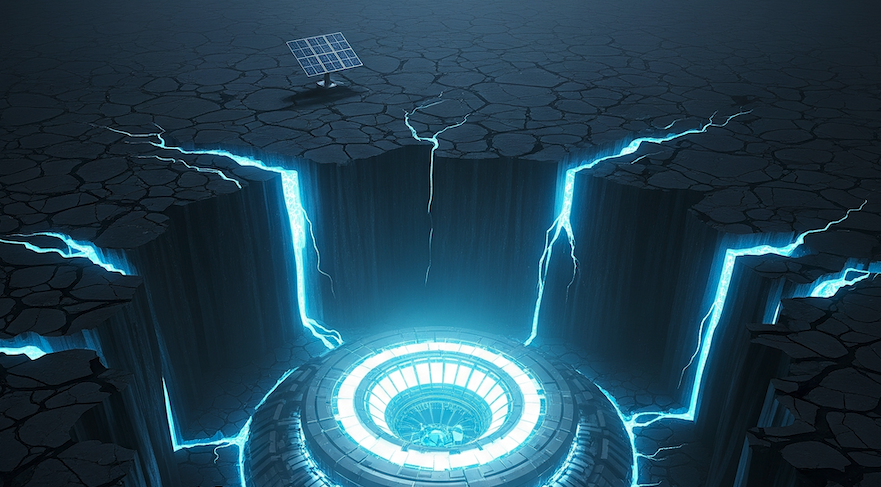A Novice’s Look at Sidus Space
Posing a Simple Question About Commercial Chips in a Radiation-Filled World
Important Disclaimer
This is not financial advice. I am a complete novice at this type of research. I hold degrees in Engineering Physics (B.S.) and Electrical & Electronics Engineering (M.S.), but my conclusions could be entirely wrong. I have previously bought and sold securities in both Sidus Space (SIDU) and Draganfly (DPRO). This report is for informational purposes only and represents my personal line of questioning. Do your own research. I am not responsible for any financial gains or losses.
The Central Conflict
Sidus Space, a company working on space and defense technology, has announced the use of NVIDIA’s Jetson platform for its on-orbit AI processing. This raises a fundamental question about equipment survivability in space. Let’s look at the two conflicting sides of this story.
Side A: The Company’s Claim
Sidus Space states its LizzieSat™ satellites use AI for “next-generation intelligence solutions” and touts its “AI-driven on-orbit capabilities.”
“Sidus Space … announced the successful on-orbit operation of its Automatic Identification System (AIS) sensor onboard LizzieSat®-3… advancing the company’s strategy to fuse multi-sensor satellite data with onboard artificial intelligence…” – Sidus Space Press Release, Sep 10, 2025
Side B: The Technical Reality
The processor at the heart of their AI strategy, the NVIDIA Jetson Orin NX, is a Commercial-Off-The-Shelf (COTS) component. It was never designed or intended for use in space.
“The NVIDIA Jetson Orin NX System-on-Module (SoM) is unequivocally not a radiation-hardened device… Its official product documentation makes no claims regarding its suitability for aerospace or radiation environments…” – An Engineering Assessment of the NVIDIA Jetson Orin NX
Hardened vs. Tolerant: What’s the Difference?
To understand the risk, we need to know the key terminology. “Radiation Hardened” and “Radiation Tolerant” sound similar, but they represent fundamentally different engineering philosophies and levels of reliability.
Built for Purpose
These components are intentionally designed from the ground up to survive the harsh radiation of space. This involves specialized manufacturing processes (like Silicon-on-Insulator), redundant circuit designs, and materials that resist radiation damage. The manufacturer provides a guaranteed performance specification (e.g., will survive up to 100 krad(Si)).
A Staggering Difference in Resilience
Independent testing reveals the gap between the Jetson Orin NX’s tolerance and the guaranteed resilience of true rad-hard chips. The metric here is Total Ionizing Dose (TID), measured in krad(Si). A higher number means better protection.
Processor Head-to-Head
Here’s how the commercial Jetson Orin NX stacks up against two processors actually designed for the rigors of space. Note the trade-off: immense performance for unguaranteed reliability.
| Metric | NVIDIA Jetson Orin NX | BAE Systems RAD5545 | Frontgrade Gaisler GR740 |
|---|---|---|---|
| Type | COTS (Commercial) | Rad-Hard by Design | Rad-Hard by Design |
| AI Performance | Up to 100 TOPS | N/A | N/A |
| TID Rating | ~37-39 krad(Si) (Tested) | 100 krad(Si) (Guaranteed) | 300 krad(Si) (Guaranteed) |
| Destructive Latchup | Not Immune (Requires external protection) | Latchup Immune (Guaranteed) | Latchup Immune (Guaranteed) |
| Manufacturer Stance | Not intended for space | Designed for SpaceVPX | QML-V Certified for space |
So, How Do You Square the Two?
On one hand, we have a company making exciting claims about AI in space. On the other, the hardware enabling these claims appears fundamentally unsuited for the operating environment without significant, undisclosed, and expensive mitigation strategies (like advanced shielding or complex watchdog systems).
Is this the “New Space” paradigm of accepting higher risk for higher performance? Or is it a critical vulnerability being overlooked? As a novice, I don’t have the answer. But the question seems worth asking.


